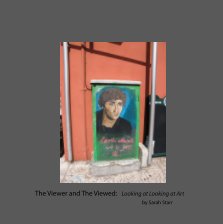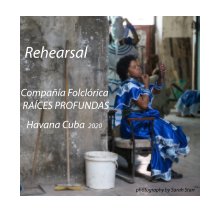Books publications exhibitions
Louvre, Paris
Rue Rivoli
Machu Picchu
The Viewer and the Viewed: looking at looking at art
The Viewer and the Viewed is a personal photographic essay of journeys through museums in Paris, New York City, and Los Angeles. It explores the relationship between the viewer of art and the art to be viewed, while posing questions about the dynamic, symbiotic, fluctuating subject/object relationship between the two. The perceptions of various philosophers and writers on this subject provide a frame for viewing.
Paris in March
Paris in March is a collection of typical photos of Paris, more or less, (les rues, les cafes, the shop windows, the Seine), except that they are taken in March when the early spring light de-saturates everything and everyone is still wearing boots and scarves. One could easily transfer these images to black and white without a loss, except for the fine line of yellow daffodils, harbinger of spring, or a wisp of red on fresh leaves, a tinge of green from new buds. They include a chill, a rain, a grey cloud, and yet too the life of the city awaiting, anticipating the warmth of spring coming to the fore. Sometimes we see, a tomato, a pink umbrella, hair dyed green as people try to hurry spring a bit. Too, the time is 2015, and Parisians’ response to Charles Hebdo, Bataclan, Brussels, is marked on city sidewalks, in windows, on posters. L’amour court les rues.
Tauantinsuyu: Photographs of the Andes
Even for a first time traveler to the highlands of Peru, like me, it becomes obvious that, though the Spanish conquistadores tried to eradicate the Quechuan culture, they did not succeed; and that now, in 2017, indigenous cultures in Peru are thriving and their story is not over. In this book I have paired the writings that a member of an Incan royal family, Garcilaso de la Vega El Inca, recorded in 1609, with photographs of Cusco and environs from my recent journey to Peru in 2017. An epilogue, “there is no such thing as a one-way land bridge,” by the North American Muscogee poet, Joy Harjo, provides a perspective on the writing of history. Whose story gathers credence, and why? Royal Commentaries of the Incas and General History of Peru By Garcilaso de la Vega, El Inca, Translated by Harold V. Livermore. 1966. Used by permission of University of Texas Press. “there is no such thing as a one-way land bridge”, from A MAP TO THE NEXT WORLD: POEMS AND TALES by Joy Harjo. Used by permission of W.W. Norton & Company, Inc. This selection may not be reproduced, stored in a retrieval system, or transmitted in any form or by any means without permission of the publisher. https://www.indiebound.org/book/9780393320961 Photographs by Sarah Starr. All Rights Reserved.
Dance of Yemaya
Rehearsal: Raices Profundas in La Habana
On a late afternoon on March 8, 2020, a group of photographers with Chris Baker, Claudia Corrales, the Jim Cline Photo group, and I walked into a cavernous studio space in Centro neighborhood of Havana. A line of brooms and a bucket adorned a concrete wall, and light filtered in from the ceiling fifty feet above. We were in an empty space that had once been a movie theater. Around the room, dancers were getting costumes ready; percussionists were tuning drums. Managers talked on cell phones. Details were discussed. These artists have performed throughout Europe, South America, The United States, and Russia. Founder Juan de Deios Ramon Morejon is considered to be one of the most knowledgeable experts of Afro-Cuban Yoruba folkloric dance and music in the world.
This day, it was dress rehearsal at Compania Folclorica Raices Profundas. This is a book of a dance.









